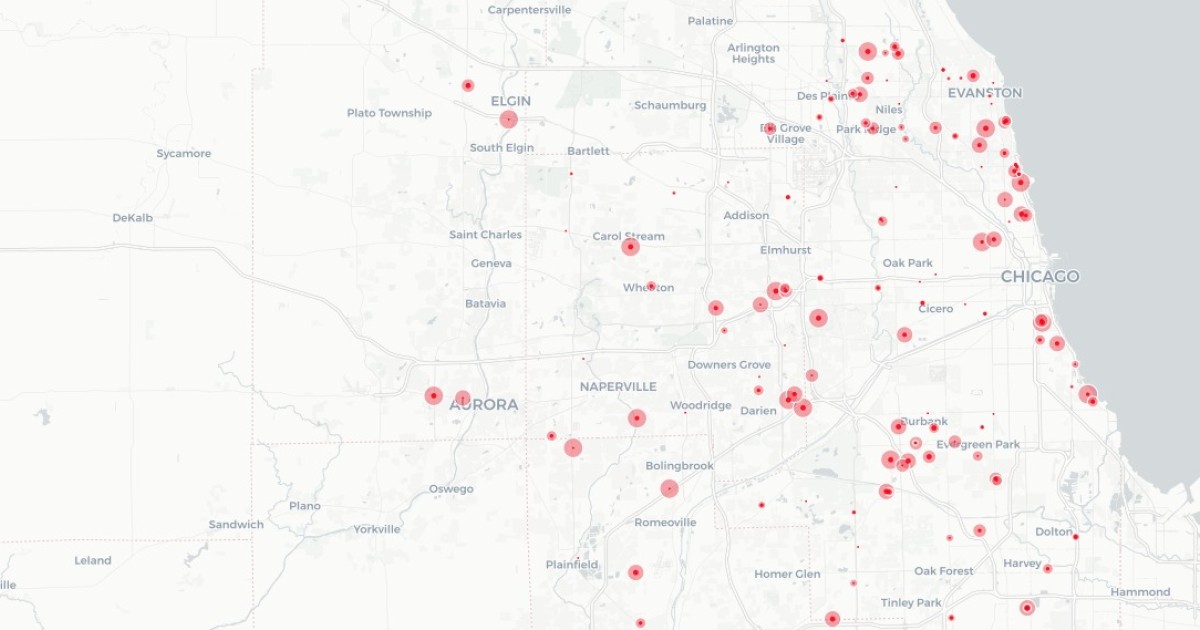New Data Show COVID-19’s Deadly Reach At Illinois Nursing Homes

The impact of the coronavirus pandemic on Illinois nursing homes is coming into clearer view after state health officials on Sunday released data showing 286 people have died of COVID-19, with a previously unreported 1,860 positive cases tied to facilities statewide.
The release of the data comes after WBEZ reported Saturday that nursing home deaths accounted for one in every four COVID-19 deaths in Cook County.
The new data show that many of the nursing homes with the most COVID-19 cases are in Cook, DuPage, Lake and Will counties. They include 81 cases each at Windsor Park Manor in Carol Stream and Symphony of Joliet; 54 cases at Chateau Nursing and Rehabilitation Center in Willowbrook; and 43 cases at Westchester Health and Rehabilitation Center in Westchester. All of those facilities have nine or more COVID-19 deaths each, according to the data
The data also reveal the scope of nursing home cases beyond the Chicago region. For example, Memorial Care Center in downstate St. Clair County, outside of St. Louis, saw 54 positive cases and one death; Garden Place Independent and Assisted Living in Monroe County had 49 cases and two deaths; and Fairhavens Senior Living in Decatur, in Macon County, had 31 cases and three deaths.
Coronavirus cases and deaths at Illinois nursing homes
When asked about the new nursing home data at a press conference Sunday, Illinois Department of Public Health Director Dr. Ngozi Ezike said, “We knew even before we got into having the large numbers of long-term care facilities with cases, that that would be one of our hardest areas.”
“We know that congregate settings, by definition – it’s hard to be able to do the physical or social distancing, and be able to separate and isolate people,” she said.
Also Sunday, Ezike updated the overall pandemic numbers in Illinois: 1,197 new positive cases in the past 24 hours, bringing the total to 30,357. There were 33 new fatalities, raising the death toll to 1,290.
Ezike said the state was taking additional measures to ensure the safety of residents at long-term care facilities, including extra cleaning, more monitoring of patients and barring visitors. She said the state is concerned about nursing homes located in “hot zones” where there are a lot of coronavirus cases, “so we’re sending materials for testing to those locations so that we can do aggressive testing of the staff and people in that facility so that we can see if we can identify cases.”
Gov. JB Pritzker said Friday that the state would release the nursing home data over the weekend, allowing residents to see for the first time the number of COVID-19 cases at facilities across Illinois. Health care professionals lauded the data release, but some remained critical.
“Skilled nursing facilities throughout Illinois encouraged transparency and we applaud Gov. Pritzker for taking this step. Unfortunately, the toll is greater than the data of confirmed cases suggests,” Dr. Rajeev Kumar, medical director of Burgess Square Healthcare and Rehab Centre in Westmont and Plymouth Place in La Grange, said in a statement released Sunday. But he said the state must do more.
“Long-term care facilities have continually asked the state to expand testing and introduce rapid testing in nursing homes. We welcome an expansion of testing so that crucial information is available for each facility to better control the spread of the virus, quarantine patients properly and protect our heroic staff,” Kumar said.
During his daily press conference Sunday, Pritzker sought to reassure all Illinois residents, who have been under a stay-at-home order for nearly a month. He touted clinical trials of drug treatments at University of Chicago and other positive signs of fighting COVID-19.
“If you can have a treatment, then you see the beginning of decline of cases and the decline of hospitalizations,” Pritzker said. “Having a treatment makes an enormous difference. But people should start to feel more confident, seeing that there are amazing private sector researchers and that’s really what’s happening.”
Last week, Chicago Mayor Lori Lightfoot said the city had flattened the curve of COVID-19 cases, but should remain cautious. Meanwhile, across the country, small protests have flared up in defiance of stay-at-home orders, and growing worries over a deepening economic crisis.
When asked why COVID-19 cases continue to spread in Illinois despite the stay-at-home order, Ezike said, “It’s not like… everyone is in their homes. People have to move around.”
“I think what we do know is that the reason that the virus has slowed down its transmission in our state is because of the stay-at-home order,” she said.
Elliott Ramos is WBEZ’s data editor. Follow him at @ChicagoEl.
–WBEZ’s Race, Class and Communities editor Alden Loury contributed to this report.
 Pathways Drug Rehabilitation Luxury Addiction Treatment & Detox Center
Pathways Drug Rehabilitation Luxury Addiction Treatment & Detox Center


